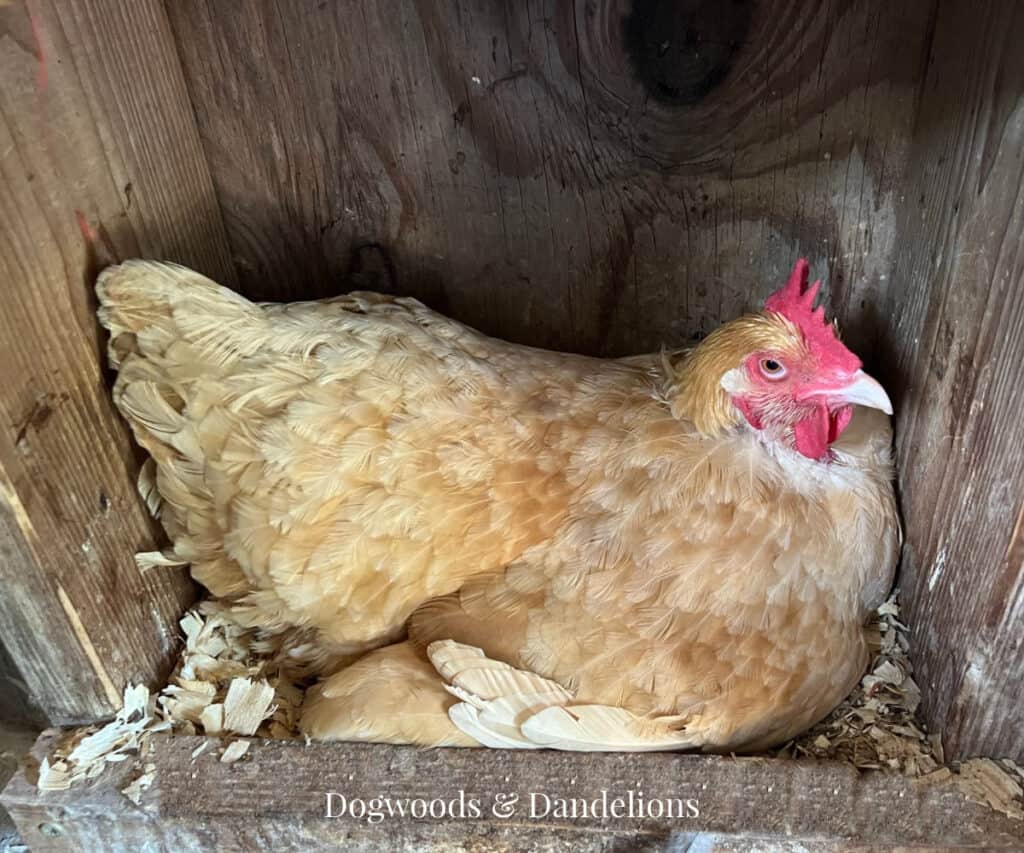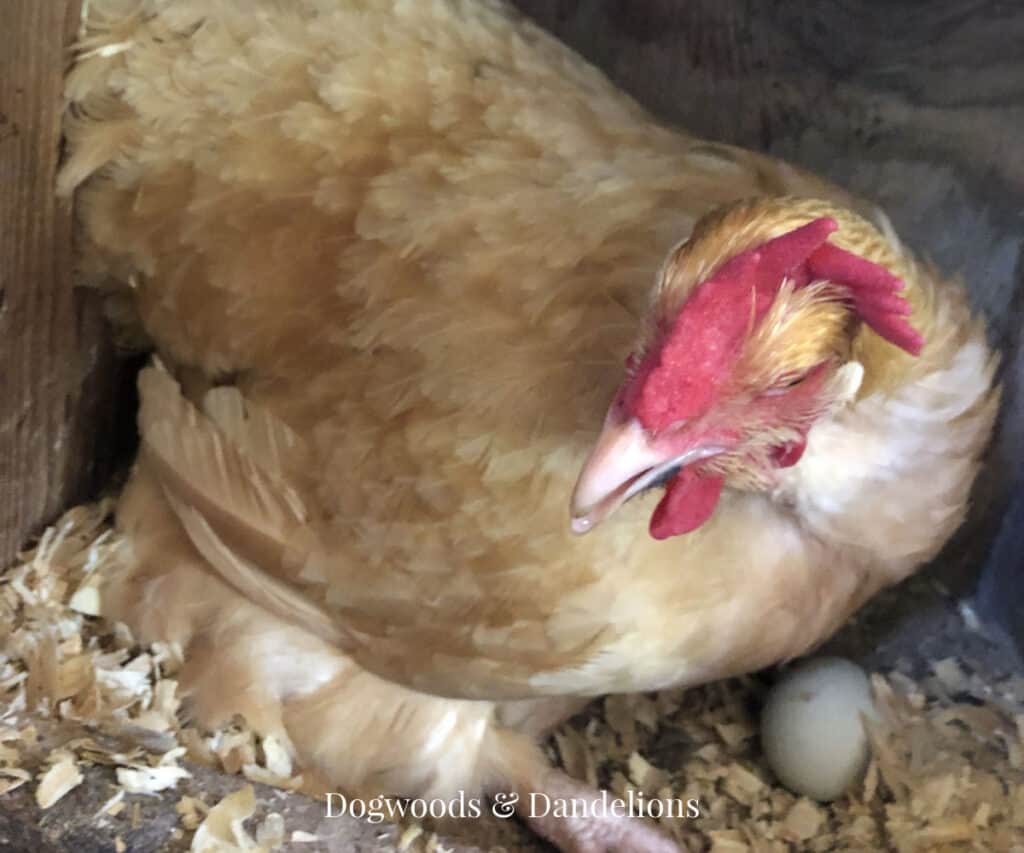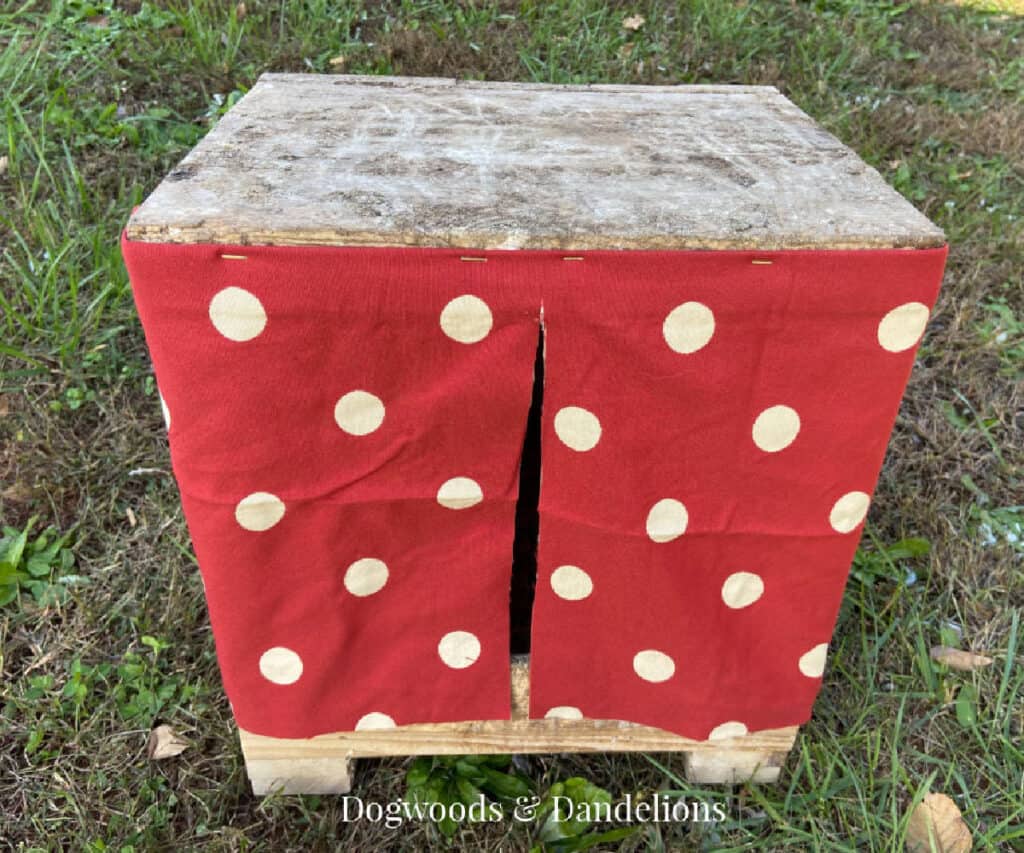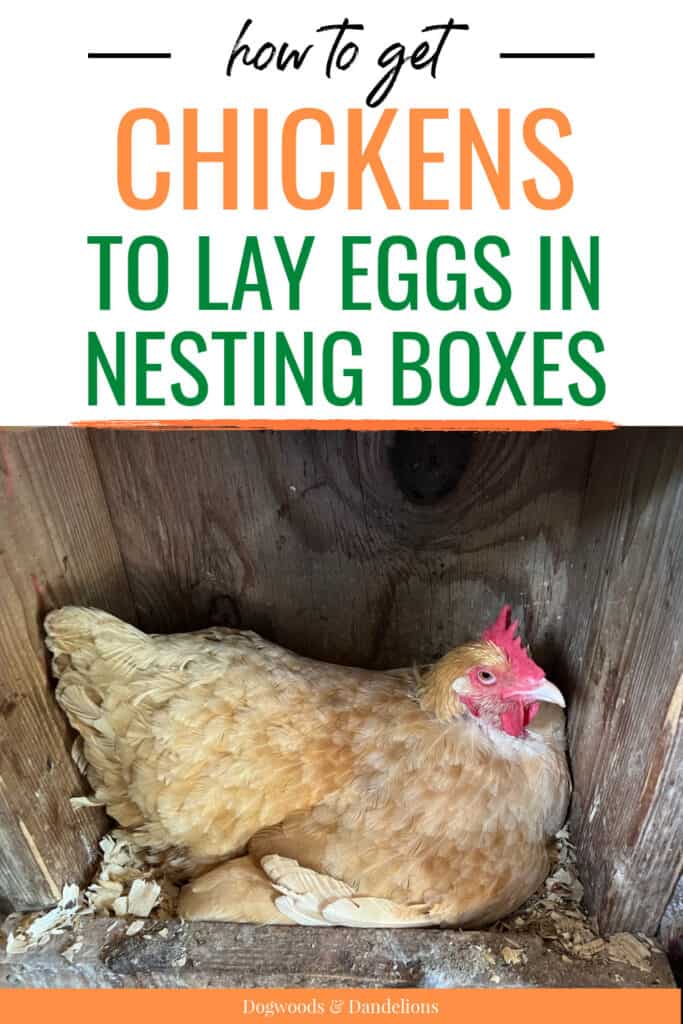How to Get Chickens to Lay Eggs in Nesting Boxes
Inside: Learn how to get chickens to lay eggs in nesting boxes.
Most chickens are generally smart and will quickly adapt to laying in nesting boxes. But occasionally, you will get a hen that refuses to lay her eggs where she is supposed to.
So how do you encourage hens in your backyard flock to lay where you want them to? This post shares why you want your chickens to lay in nesting boxes and how to get chickens to lay eggs in nesting boxes.

Affiliate Disclosure: Please note that some of the links in this article may be affiliate links and I may receive a small commission if you purchase something through a link. It will not change your cost. As an Amazon Associate, I earn from qualifying purchases. For more information, see my disclosures page.)
Why Is My Chicken Not Laying Eggs in The Nesting Box
Sometimes, you will find that a chicken isn’t laying in the nesting box. This is actually very common with pullets (young hens) that have just started to lay their first egg.
New layers aren’t exactly sure what is happening and when they need to lay their egg.
Another reason your chickens may not be laying in the nest boxes is that there is a broody hen sitting on eggs in her favorite nesting box.
Sometimes if a hen can’t get to the box she wants to lay in, she will just lay on the coop floor. But there are ways to encourage your chickens to lay their eggs where you want them to.
Why You Want Chickens to Lay Eggs in Nesting Boxes
The main reason you want your flock to lay their eggs in nesting boxes is that it keeps the eggs clean. When eggs are laid outside, they tend to get soiled or muddy. And dirty eggs are unsanitary and not safe to eat.
When your chickens lay in nesting boxes, it also will help keep the eggs from getting cracked when they hit the bottom of the nesting box. (In case you aren’t aware, a hen will actually stand up when she lays her egg.)
If you have filled the nest boxes with pine shavings or another type of cushioning, this will soften the fall when the hen lays her egg, helping to reduce the likelihood that it cracks or breaks.
Another reason you want your laying hens to use nesting boxes is that it keeps the eggs from getting stepped on and broken. Chickens can accidentally step on eggs that aren’t where they are supposed to be. And people can break eggs walking into the coop and not realizing eggs are out of place.
And unfortunately, broken eggs can lead to an egg-eating habit in your flock which can be difficult to break.
Read: How to Stop Your Chickens From Eating Their Eggs
How to Get Chickens to Lay Eggs in Nesting Boxes
These tips and tricks will help encourage your hens to lay eggs in nesting boxes.
Position the Nesting Boxes in a Secluded Spot
First, to encourage your chickens to lay in their nest boxes, you need to position them in the right place. Make sure the boxes are in a quiet, dark, and secluded spot.
The best place to locate the nesting area is in a spot in the coop that isn’t near the door to the run. The less traffic around the boxes, the better.

Add Cushioning to the Nesting Boxes
Chickens will appreciate a comfortable place to lay their eggs. Adding pine shavings to the nesting boxes gives chickens something to create their “nest” from.
The shavings also serve to cushion the eggs when they are laid. And, shavings help maintain a clean nest area. And a clean nest box means clean eggs.
Other good choices for nesting materials include wood shavings (no cedar) or a thick layer of straw. You can also purchase pads specifically for lining the bottom of the nesting box.
After many years of chicken keeping, I have found that I just prefer pine shavings. They are inexpensive and easy to remove and replace if an egg does accidentally get broken or a chicken poops in the nesting box.
A long time ago, chickens were raised in barns with other animals. They would often make their own nests and lay their eggs in hay bales or any other nesting material they could find. So it is only natural that hens would prefer a nesting spot that is comfortable and in a safe location.
Add Curtains to the Nesting Boxes
Secondly, add nesting box curtains. Adding curtains to the nesting box keeps the box dark. Hens prefer to lay their eggs in solitude without an audience.

If you research chickens in the wild, you would learn that typically, a hen would find a secluded area to lay her eggs away from the danger of predators. In the wild, hens want to be safe while laying eggs but they also want a place to keep the eggs safe too.
Read: Do You Really Need Nest Box Curtains in Your Chicken Coop?
Ensure the Nesting Boxes Are the Right Size
Nesting boxes for your hens should be the right size – not too big or too small. For most standard-size chicken breeds a square nesting box, 12″ tall x 12″ wide x 12″ deep should be perfect. This size gives the hen enough space to move around a bit but is tight enough that she feels safe.
For really large breeds like Jersey Giants, I recommend making the nest box just a bit wider, say 14″. The height and depth can remain at 12″.
If you only raise bantam hens, they will prefer a smaller nesting box. 10″ tall by 12″ wide by 10″ deep will make a cozy nest box for these smaller birds.
Add Fake Eggs to the Nesting Box
Adding fake eggs to the nesting box can encourage your hens to lay eggs in those boxes. Chickens tend to lay eggs where other eggs already are.
A chicken will assume that if other hens felt comfortable laying their eggs in the box, it is a safe place for them to lay also.
If you don’t have fake eggs, you can order them online. But you can also use golf balls, ceramic eggs, or wooden eggs.
Be Sure You Have Enough Nesting Boxes
Be sure that you have enough nest boxes for your flock. A general rule of thumb is approximately one box for every four hens. If you don’t have enough boxes, your hens may get tired of waiting for an empty box and lay their egg on the floor of the coop.
I will warn you though that many flocks tend to have a favorite nesting box. Chickens tend to be creatures of habit.
Many times the chicken will only lay her eggs in the same nesting box each time. And sometimes the hens will congregate around that box waiting for the chance to lay their egg.
As long as there is an adequate number of nest boxes, there isn’t much you can do in that situation. But as long as you have provided curtains on the nesting box, the hen laying her egg should be able to do so in relative comfort.
Don’t Lock Your Chickens Out of the Coop
I think this goes without saying, but if you have free-range chickens, don’t lock them out of the coop during the day. Allow them to come and go as they please and most hens will return to the nest boxes to lay their eggs during the day.
These tips and tricks should help you get your chickens to lay eggs in the nesting boxes instead of on the floor of the coop. Do you have any other tricks for encouraging your hens to lay where they are supposed to?
Related Posts
- How Many Chickens Do I Need?
- How to Control Flies in the Chicken Coop
- Why Your Chickens Need to Take a Dust Bath

Meet Julie
I’m a farm girl born and bred in North Carolina. I’ve been growing a vegetable garden for over 20 years (and helping my Mom grow hers even longer). I’ve been raising chickens in my bathtub and backyard for 12+ years. I believe that homegrown food can be made simple. Let’s get started.


